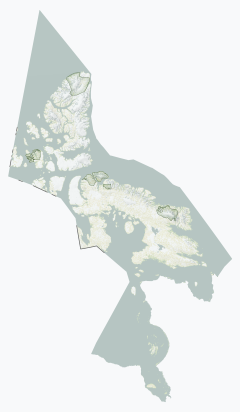User:Awmcphee/sandbox
Experimental 2016 StatsCan demographic profile template[edit]
Fairview, Alberta[edit]
- Fairview census statistics
Mother tongue (2016[1])
English (91.9%)
French (0.9%)
Indigenous language (0.3%)
Other language (5.9%)
Multiple (1.2%)
Indigenous and visible minority identity (2016[2][3])
European Canadian (87.5%)
Visible minority (0.6%)
First Nations (4.7%)
Métis (7.2%)
Inuit (0.0%)
Other Indigenous (0.0%)
| Population pyramid 2016 | ||||||||||||||||||||||||||||||||||||||||||||||||||||||||||||||||||||||||||||||||||||||||||||||||
|---|---|---|---|---|---|---|---|---|---|---|---|---|---|---|---|---|---|---|---|---|---|---|---|---|---|---|---|---|---|---|---|---|---|---|---|---|---|---|---|---|---|---|---|---|---|---|---|---|---|---|---|---|---|---|---|---|---|---|---|---|---|---|---|---|---|---|---|---|---|---|---|---|---|---|---|---|---|---|---|---|---|---|---|---|---|---|---|---|---|---|---|---|---|---|---|---|
| ||||||||||||||||||||||||||||||||||||||||||||||||||||||||||||||||||||||||||||||||||||||||||||||||
Baffin Region[edit]
M.D. of Opportunity[edit]
- M.D. of Opportunity census statistics
Mother tongue (2016[4])
English (65.3%)
French (0.5%)
Indigenous language (26.5%)
Other language (3.5%)
Multiple (4.4%)
Indigenous and visible minority identity (2016[5][6])
European Canadian (16.2%)
Visible minority (4.2%)
First Nations (69.4%)
Métis (10.1%)
Inuit (0.0%)
Other Indigenous (0.0%)
| Population pyramid 2016 | ||||||||||||||||||||||||||||||||||||||||||||||||||||||||||||||||||||||||||||||||||||||||||||||||
|---|---|---|---|---|---|---|---|---|---|---|---|---|---|---|---|---|---|---|---|---|---|---|---|---|---|---|---|---|---|---|---|---|---|---|---|---|---|---|---|---|---|---|---|---|---|---|---|---|---|---|---|---|---|---|---|---|---|---|---|---|---|---|---|---|---|---|---|---|---|---|---|---|---|---|---|---|---|---|---|---|---|---|---|---|---|---|---|---|---|---|---|---|---|---|---|---|
| ||||||||||||||||||||||||||||||||||||||||||||||||||||||||||||||||||||||||||||||||||||||||||||||||
Alberta[edit]
- Alberta census statistics
Mother tongue (2016[7])
English (74.3%)
French (1.8%)
Indigenous language (0.7%)
Other language (20.9%)
Multiple (2.3%)
Indigenous and visible minority identity (2016[8][9])
European Canadian (69.9%)
Visible minority (23.5%)
First Nations (3.4%)
Métis (2.9%)
Inuit (0.1%)
Other Indigenous (0.2%)
Religious affiliation (2011[10])
Christian (60.3%)
Sikh (1.5%)
Buddhist (1.2%)
Muslim (3.2%)
Jewish (0.3%)
Hindu (1.0%)
Aboriginal spirituality (0.4%)
Other religions (0.5%)
Irreligious (31.6%)
Christian sub-affiliation (2011[11])
Roman Catholic (40.3%)
United Church (12.5%)
Anglican (6.5%)
Lutheran (5.5%)
Baptist (3.1%)
Pentecostal (2.8%)
Orthodox (2.4%)
Presbyterian (1.7%)
Other Christian (25.2%)
References[edit]
- ^ "Language Highlight Tables". 2016 Census. Statistics Canada. 2019. Retrieved July 16, 2019.
- ^ "Aboriginal Peoples Highlight Tables". 2016 Census. Statistics Canada. 2019. Retrieved July 16, 2019.
- ^ "Immigration and Ethnocultural Diversity Highlight Tables". 2016 Census. Statistics Canada. 2019. Retrieved July 16, 2019.
- ^ "Language Highlight Tables". 2016 Census. Statistics Canada. 2019. Retrieved July 16, 2019.
- ^ "Aboriginal Peoples Highlight Tables". 2016 Census. Statistics Canada. 2019. Retrieved July 16, 2019.
- ^ "Immigration and Ethnocultural Diversity Highlight Tables". 2016 Census. Statistics Canada. 2019. Retrieved July 16, 2019.
- ^ "Language Highlight Tables". 2016 Census. Statistics Canada. 2019. Retrieved July 16, 2019.
- ^ "Aboriginal Peoples Highlight Tables". 2016 Census. Statistics Canada. 2019. Retrieved July 16, 2019.
- ^ "Immigration and Ethnocultural Diversity Highlight Tables". 2016 Census. Statistics Canada. 2019. Retrieved July 16, 2019.
- ^ "Religion (108) for the Population in Private Households of Canada". 2011 National Household Survey. Statistics Canada. 2019. Retrieved July 16, 2019.
- ^ "Religion (108) for the Population in Private Households of Canada". 2011 National Household Survey. Statistics Canada. 2019. Retrieved July 16, 2019.



